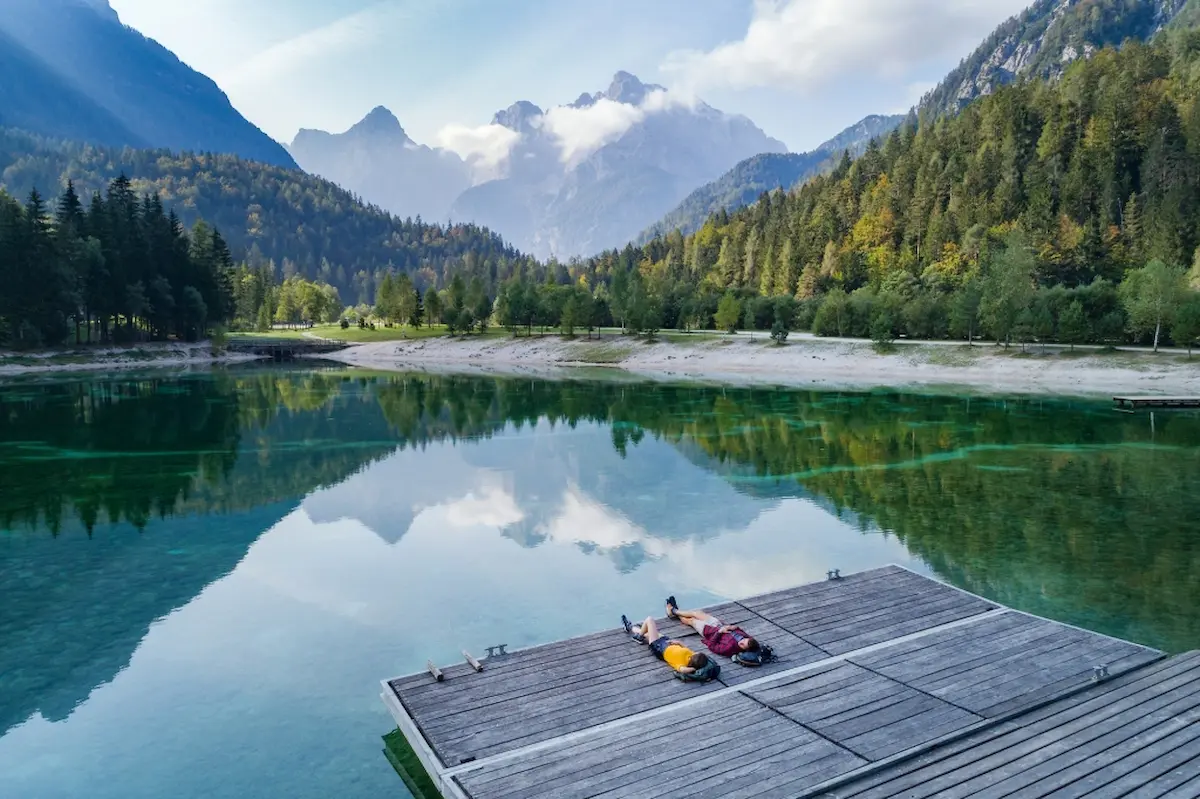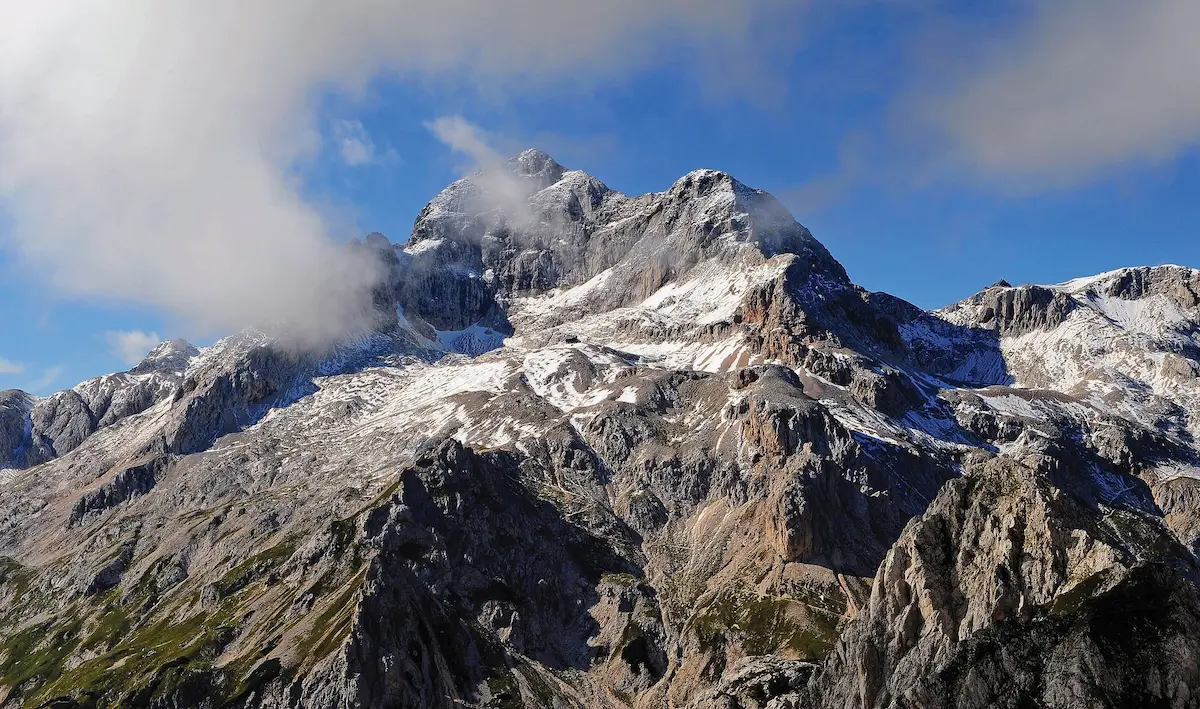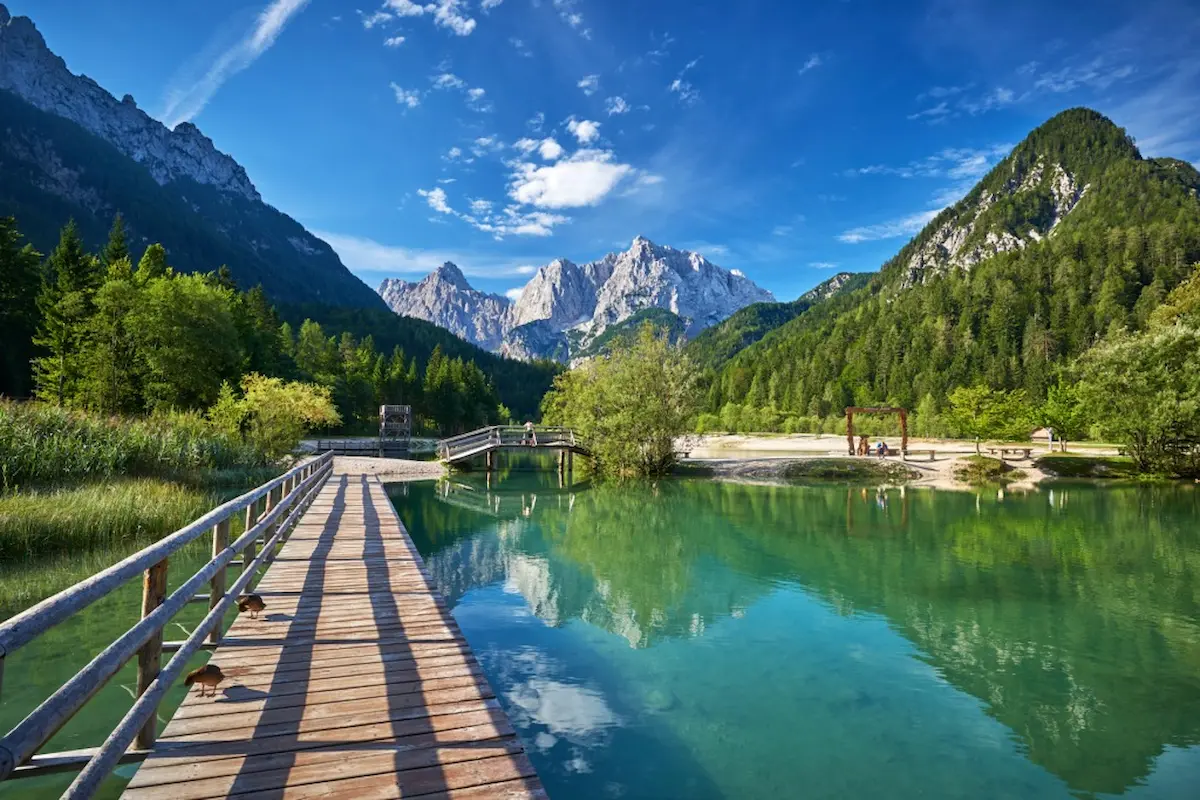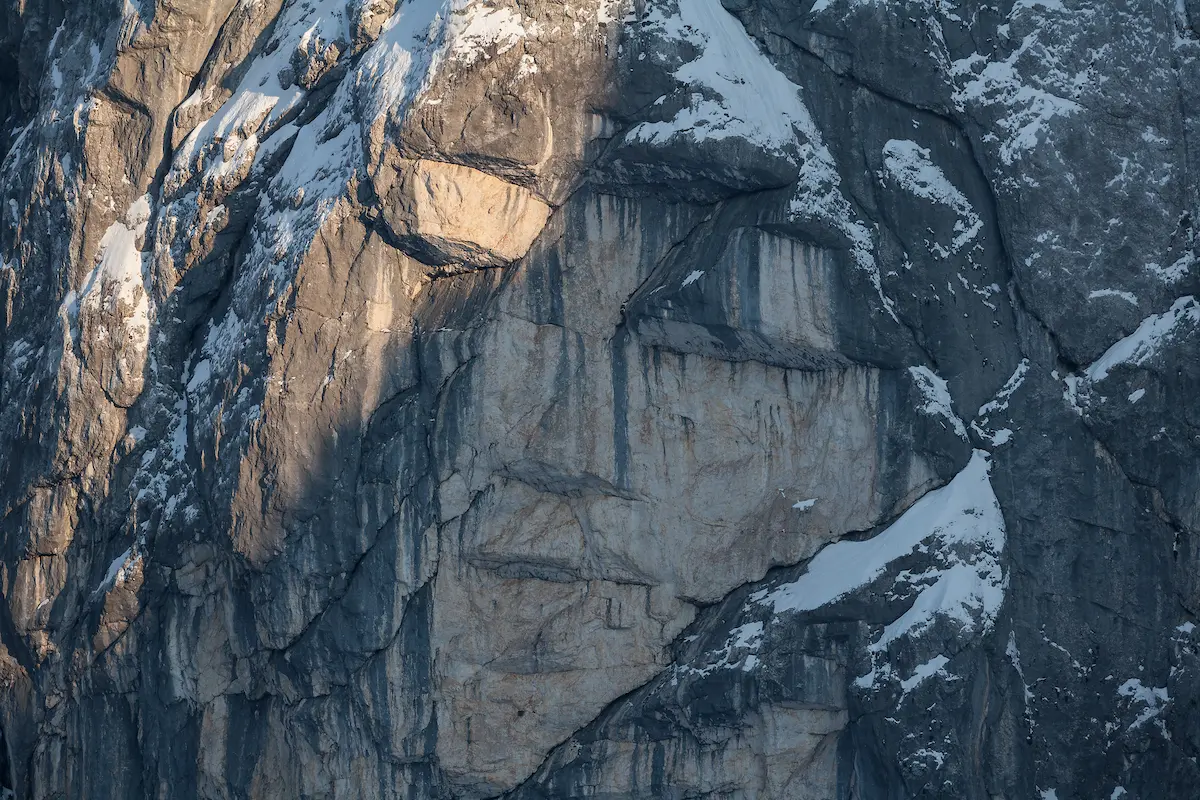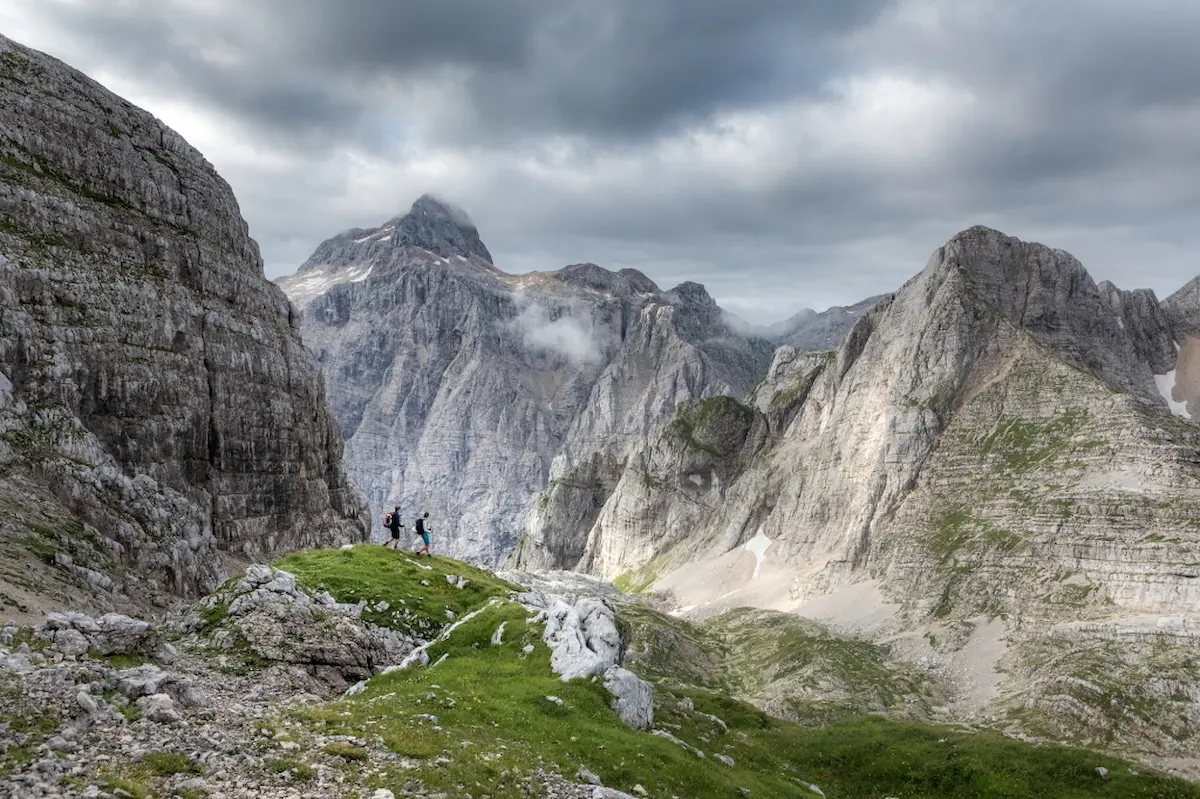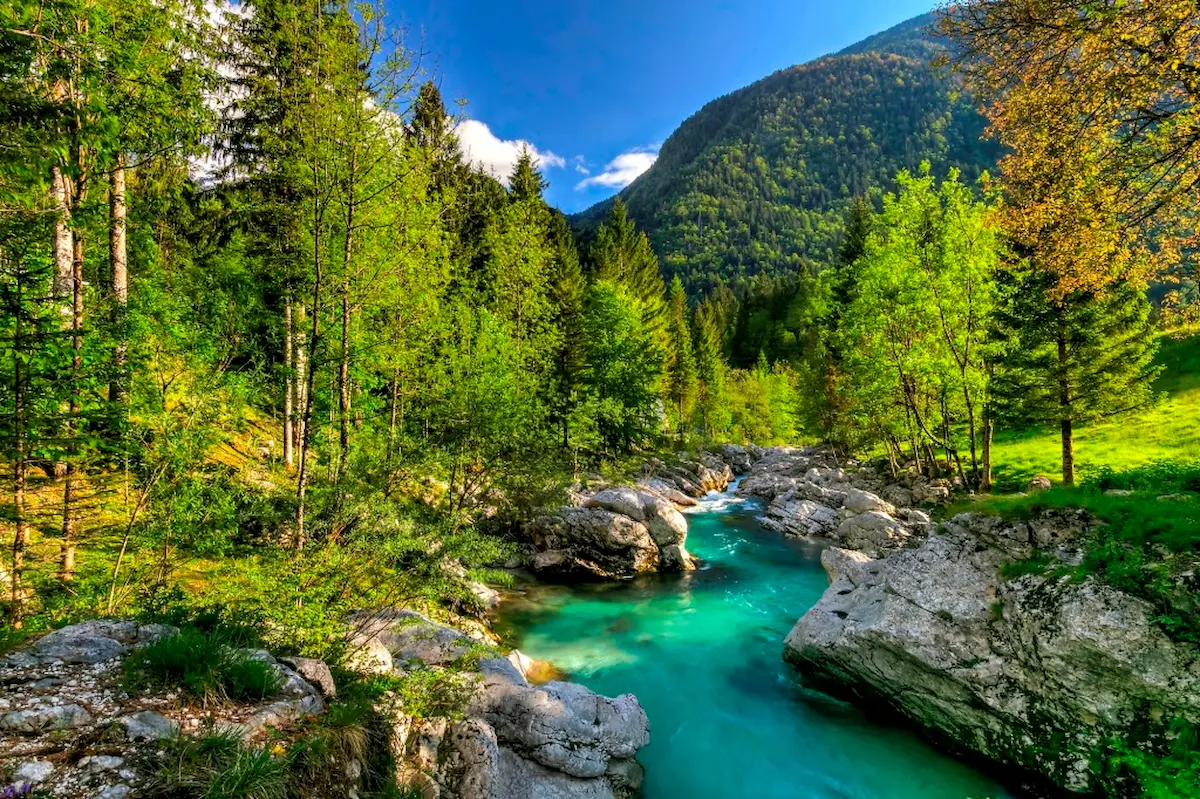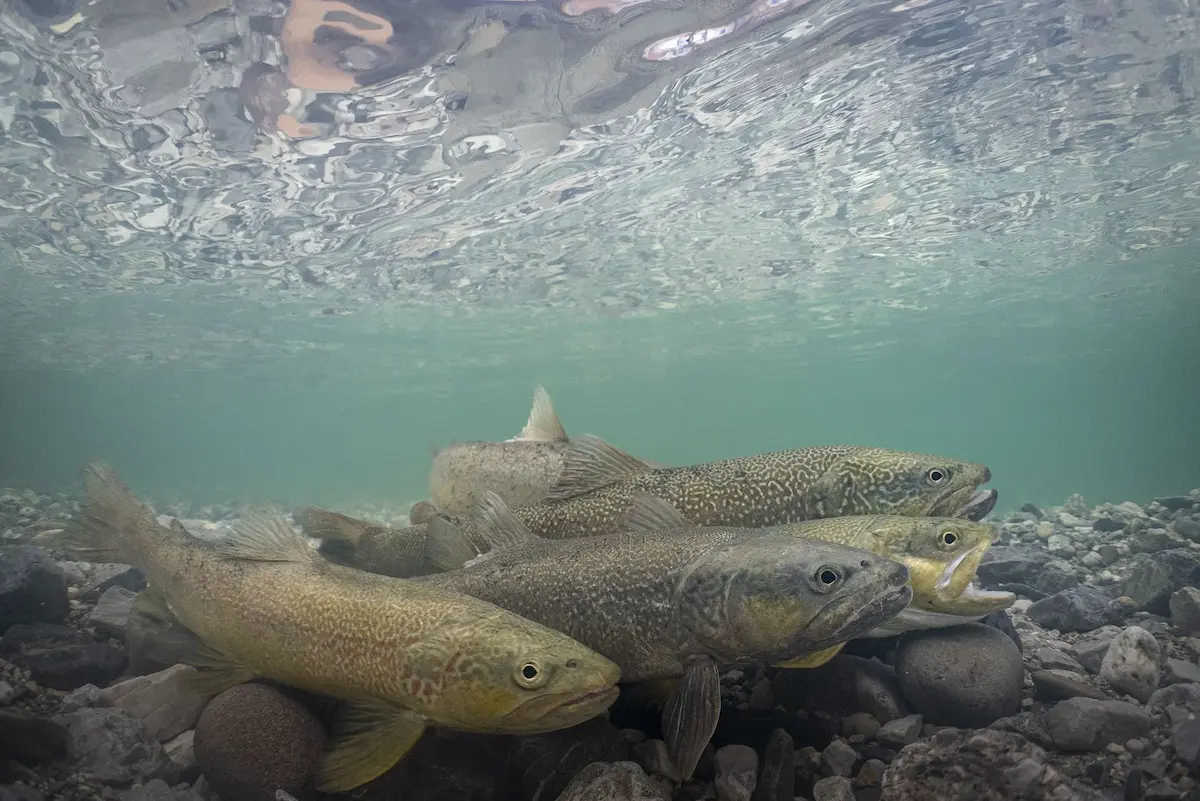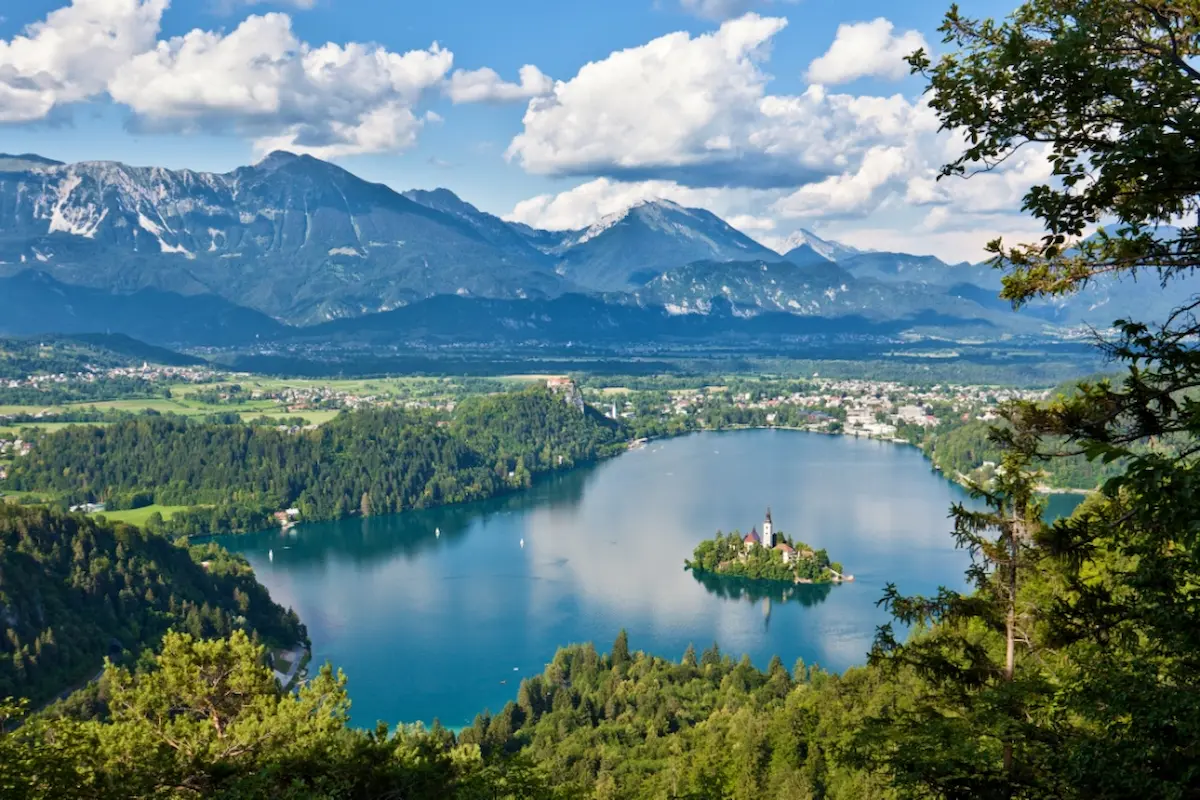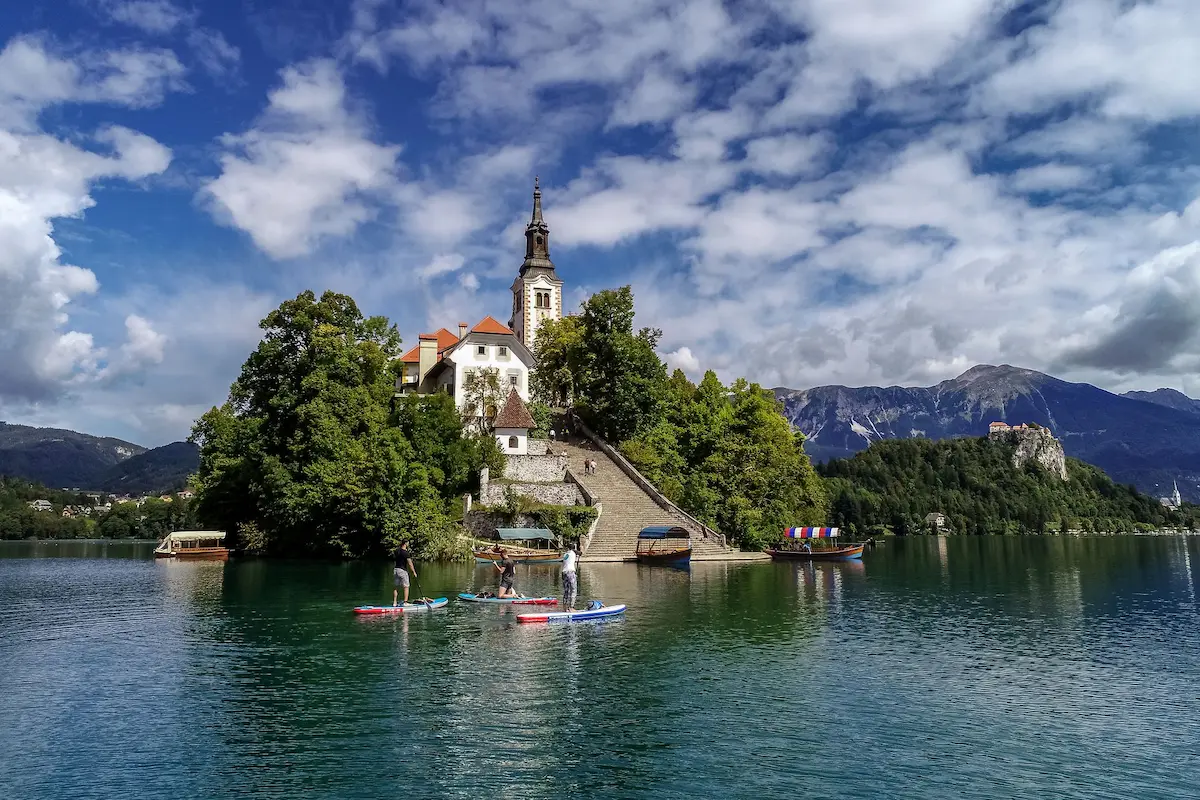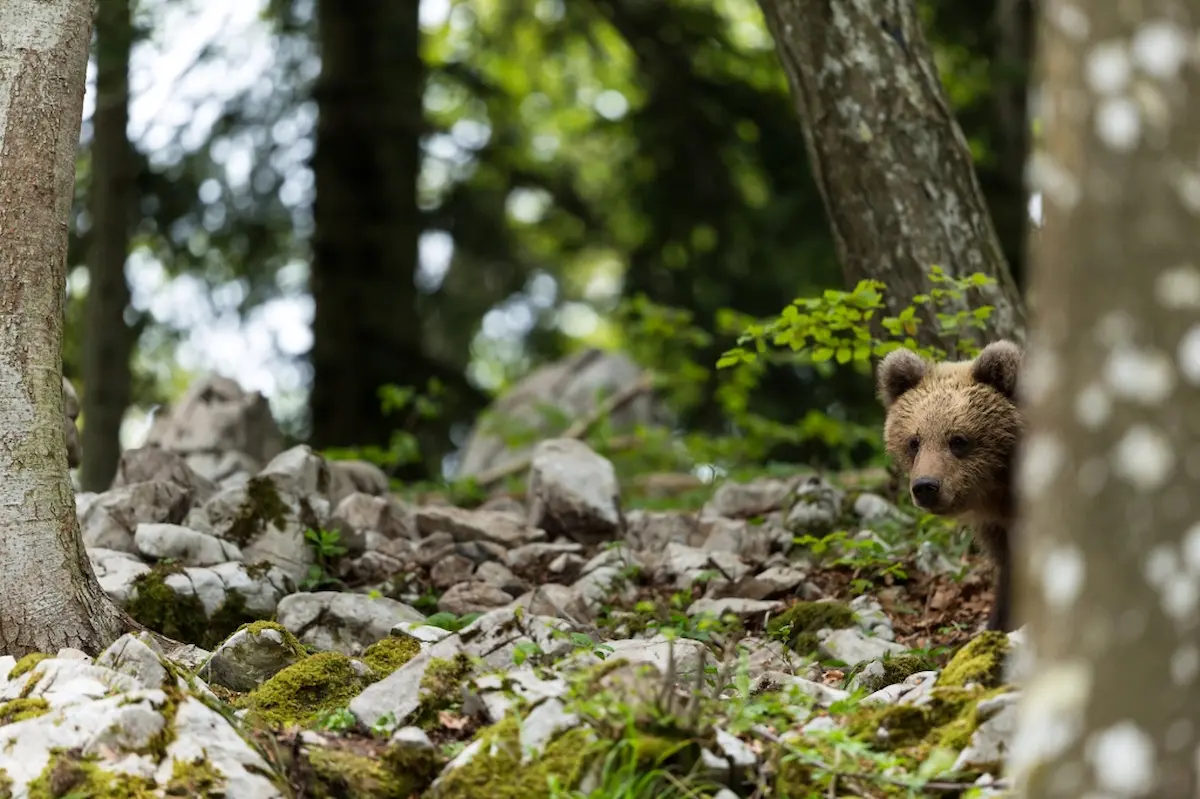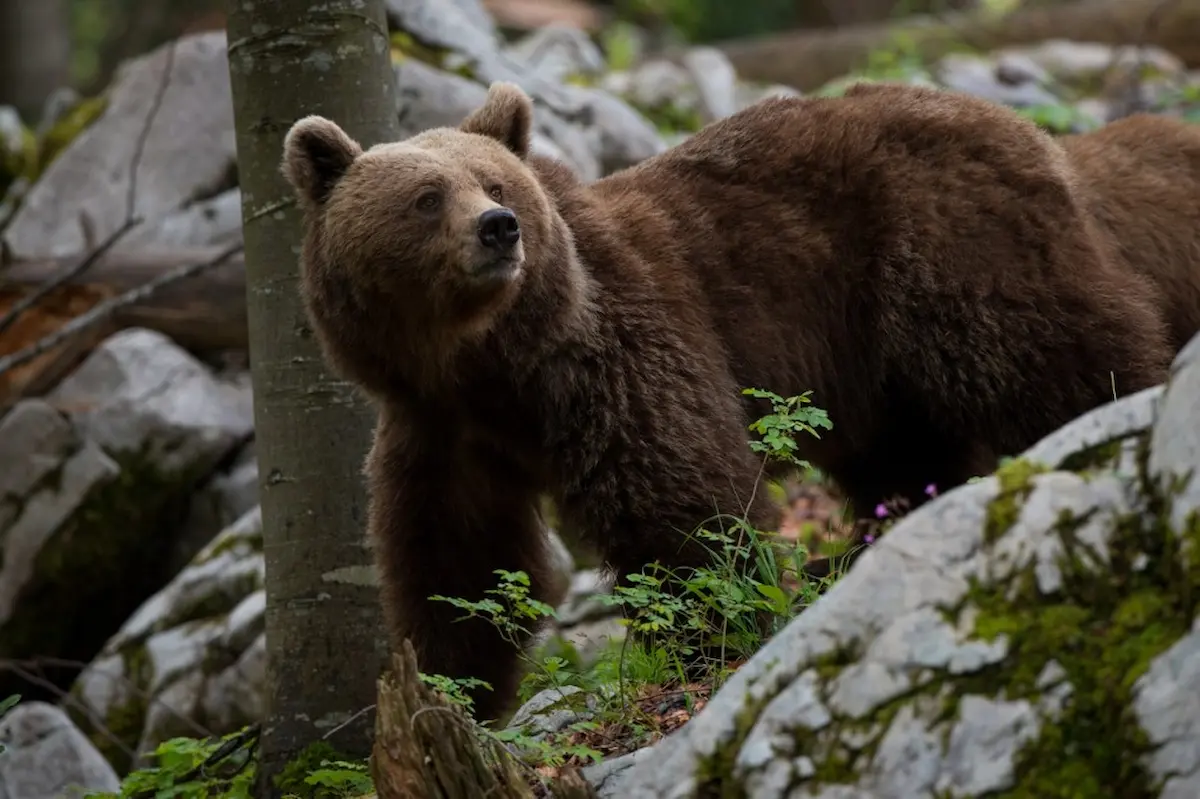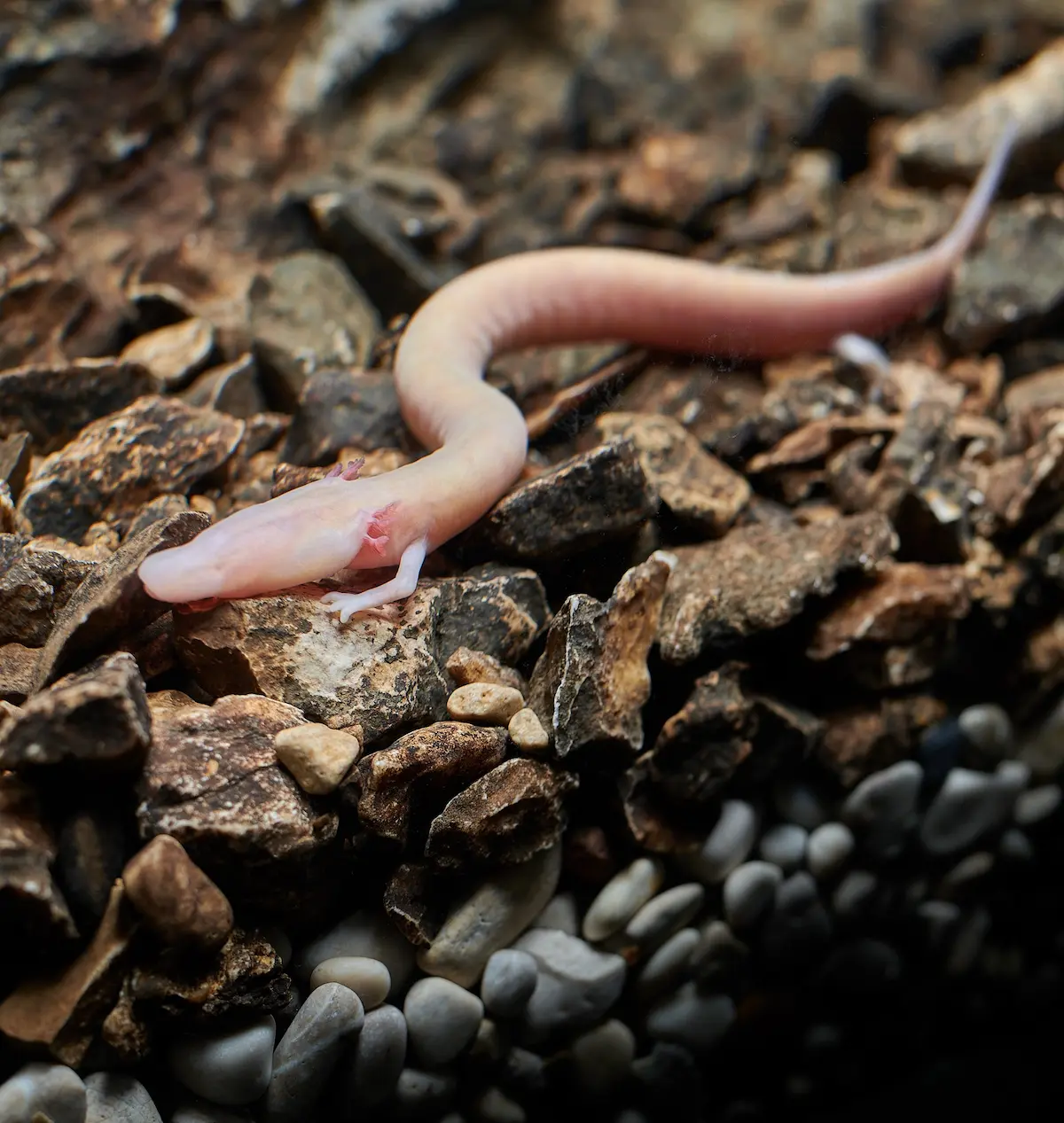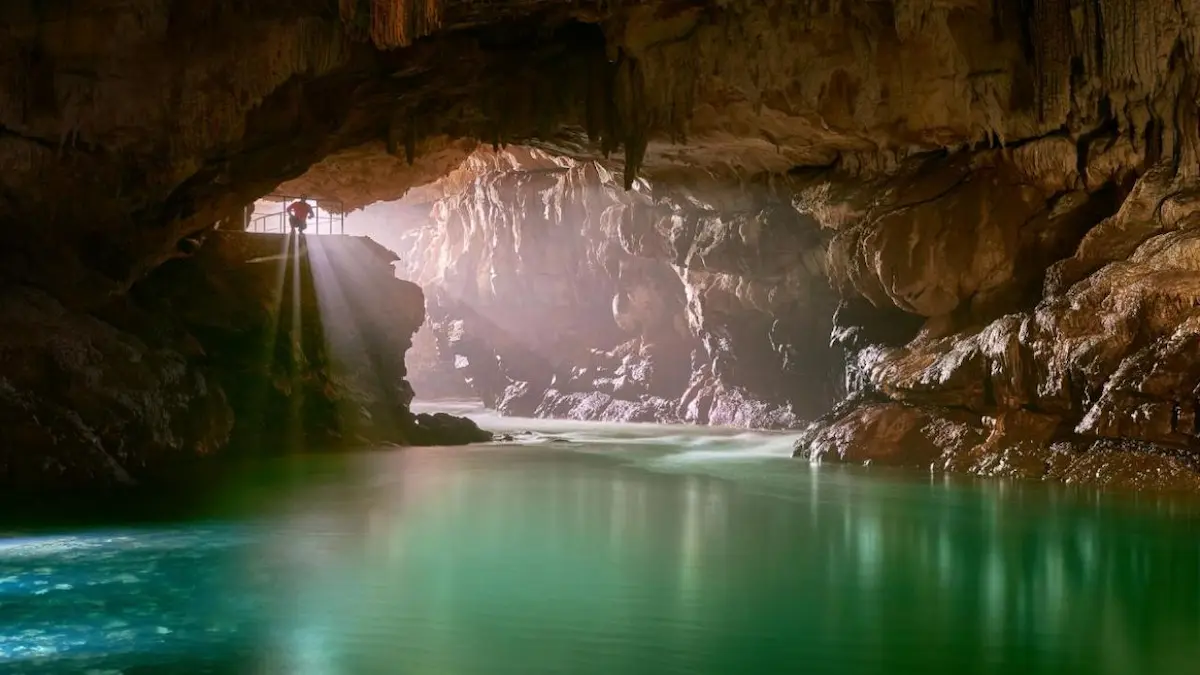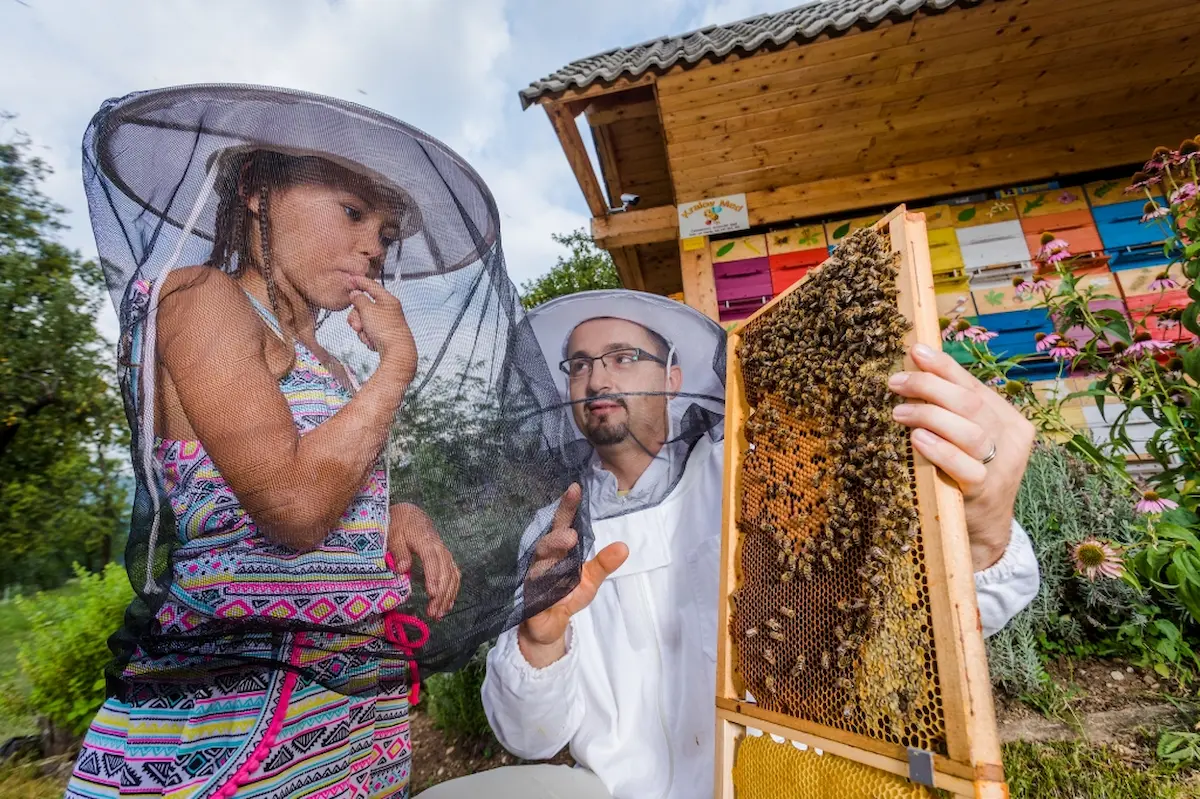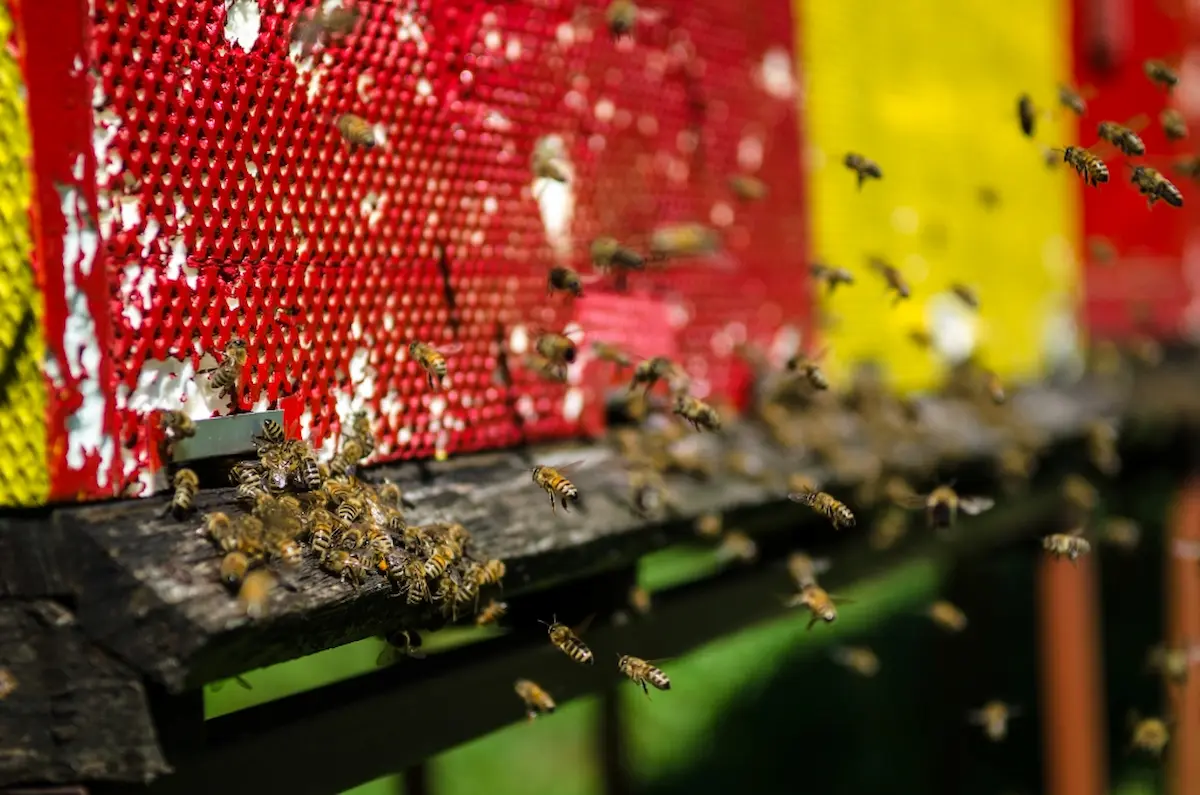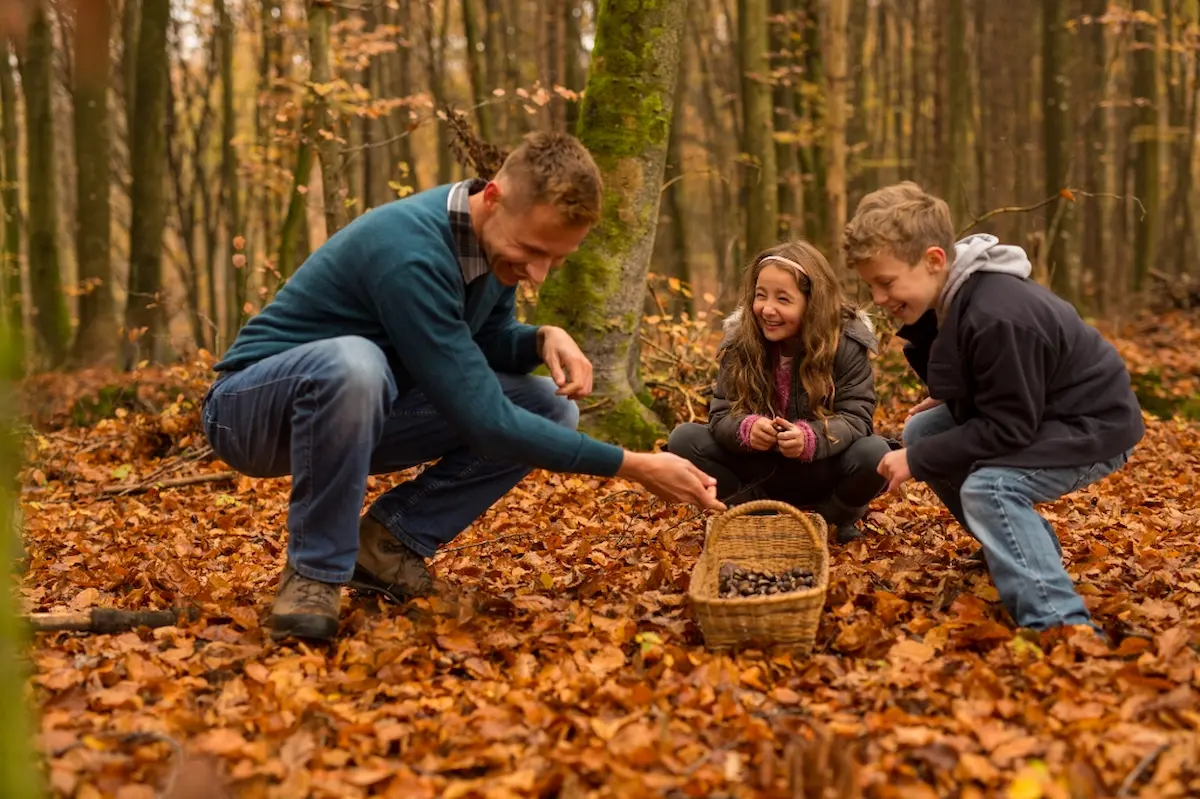Slovenia's diverse natural environment
Slovenia, the small country in the heart of Europe, offers an almost unrivalled variety of different natural areas. From the high mountains of the Julian Alps to low mountain ranges, karst areas with deep gorges, caves and gorges, moorland, lakes and unspoilt rivers. Mediterranean impressions are conveyed by the ‘Slovenian Riviera’ in the south on the Adriatic Sea, while the east of the country merges topographically and climatically into the Pannonian Plain.
Slovenia is not only located in the green heart of Europe, it is also ‘green at heart’ itself. This is because the country's green treasures are responsibly cared for, researched, managed and made accessible to gentle tourism. Mass tourism and a ‘holiday industry’ are not to be found here; those responsible always ensure a favourable balance between the interests of residents, tourists and nature. All of this is expressed in concrete figures:
- 60 per cent of the national territory is forested
- More than a third of the area is a NATURA 2000 protected area
- Less than a third is used for agriculture
- More than 22,000 animal and plant species are recorded
- Of these, more than 100 plants and 850 animal species are endemic, occurring only here
- 10,000 kilometres of hiking trails have been created and are continuously maintained
- 1 national park, 3 regional parks, 47 landscape parks and 57 nature reserves with a total population of just two million people and an area equivalent to the German federal state of Rhineland-Palatinate
Exploring nature in nature parks and on themed trails
The Ministry of the Environment emphasises the value of landscape and biological diversity for tourism and works towards nature-friendly tourism in this context. Recreation and immersing oneself in the environment are the top priorities. Extreme sports and performance tourism are explicitly avoided, but this does not mean that sporting activities of all kinds, on land, on water, in the air and underground, are not part of the tourism offer, on the contrary...
Mountain trails
Hiking mountain trails is an effective way to come to terms with yourself and nature, to air out your mind and body and to take in the splendour of the landscape. Slovenia offers plenty of opportunities for this, as a large part of the country is mountainous, and in some cases high mountainous.
The northern part is home to the Julian Alps, a mountain range of the southern Limestone Alps named after Julius Caesar, as well as the Kamnik-Savinja Alps, part of the Cranian Alps and the Karavanke mountain range.
Triglav National Park
Triglav National Park is the largest protected area in Slovenia. It is home to the majority of flora and fauna species found in Slovenia and is probably one of the best-known refuges in the Eastern Alps, but without being overrun by tourists.
At 2864 metres, Triglav is the highest mountain in Slovenia and the Julian Alps. Located south-east of Kranjska Gora, it dominates an area of magnificent wilderness and ruggedness and forms the national emblem of Slovenia in stylised form. Triglav means nothing other than ‘the three-headed one’. The Triglav National Park, a UNESCO biosphere reserve and Natura 2000 site, which has actually been in existence for one hundred years, comprises three protected zones, the two inner zones of which have the highest protection status. The anniversary is celebrated accordingly, especially with the annual flower festival in Bohinj.
Hiking trails lead directly from Kranjska Gora and Lake Jasna into the heart of the national park to the Vitranc peak, from where you can enjoy a magnificent panorama of the inner area of the national park and the surrounding Karavanke, Carnic and Kamnik-Savinja Alps. The connection from Kranjska Gora southwards to Soča and Bovec and at the same time the dividing line between the Slovenian East Julian Alps and the predominantly Italian West Julian Alps is via the Vršič saddle; Mangart, Razor and Prisojnik (Prisanc) form the visual high points. The rock face of the pagan girl in the Prisojnik west face, which is clearly visible from the road, and the rock gate below the summit, which at 50 x 80 metres is one of the largest in the Alps, are particular tourist highlights, with the rock face even having a mythological significance. As is so often the case in the Alpine region, it is about a legendary figure - in this case a fortune teller - who was ‘petrified’ as punishment for breaking the ‘rules of the guild’.
Waterways
Mountain country equals river country. Slovenia is one of the countries with the most water in Europe. While the Mura and the Drava come from the north-west from Austria and drain into the Black Sea via the Danube, the Soča flows from the high Alps in the north to the south-west and drains into the Gulf of Trieste.
The Sava, which also originates in the Julian Alps, turns eastwards and flows into the Danube near Belgrade in Serbia. Slovenia's river system is also known as the ‘blue heart of Europe’. Blue also because the streams and rivers shimmer in a deep blue or blue-green colour. This is due to the fact that they carry a lot of dissolved lime from their origins in the mountains, which particularly reflects the blue colour of the light spectrum.
The Mura and Drava rivers with their riparian forests - also in Slovenia - are also part of the ‘Amazon of Europe’, namely the ‘UNESCO 5-Country Biosphere Reserve Mura Drava-Danube’. Slovenia is not limited to mountain streams and rivers.
Intact natural areas by the water
The Soča is probably the best-known river in Slovenia. It rises in the Julian Alps near the Vršič Pass and flows into the Adriatic Sea near Monfalcone in Italy under the name Isonzo. The Soča is not only known for its crystal blue water and its gorges and pools, but also for the marble trout (marmorata), a species up to 1.20 metres in size that only occurs in the tributaries to the northern Adriatic, especially the Soča. The species itself is not endangered in Slovenia, but hybridisation with the brown trout, which was popular with anglers in the past, is causing massive problems for the population. In Switzerland, the marmorata was named Fish of the Year 2024.
The Soča Valley was the first to earn the title of ‘Outstanding European Destination’ (EDEN) for its sustainable tourism development. For example, it impressed with the ‘Stories of the Soča’ project, which still commemorates the armed conflicts between Austrians and Italians in the First World War. There are many tourist attractions, from canyoning, rafting and whitewater kayaking to fly fishing and hiking. But always with the proviso that they are used in an environmentally friendly way.
Lake Bled
Lake Bled, formed in the course of the last ice age, is a real natural jewel and a first-class tourist destination. Thermal springs and its own origin myth surrounding the fairy island of Blejski Otok almost in the centre of the lake are among its special features. The hiking trail around the lake is six kilometres long and horse-drawn carriage rides are also available. Otherwise, the lake offers all kinds of water sports. In winter, the lake, which is only 475 metres above sea level, freezes over from time to time, otherwise it is one of the warmest Alpine lakes in summer. Traces of the area's ancient settlement and the castle of Bled on a rock on the northern shore are popular excursion destinations.
Brown bear, olm and Carniolan bee
Slovenia, which is so rich in forests, is still and once again home to the large predators brown bear, lynx and wolf, which were once native to all of Europe. Around 900 bears have now returned to Slovenian territory. Guided tours and specially erected high seats (forest observatories) make it possible to observe the shy giants without disturbing them in their habitat.
The olm, which occurs exclusively in the Dinaric Karst, is actually a tailed amphibian, but it spends its entire long life in the larval stage and never grows up, so to speak. If it has access to clean water, it can reach an age of 100 years with a maximum weight of just 20 grams. Due to its almost exclusively subterranean lifestyle, its eyes are degenerated and disappear under the scalp. The olm is a predator that can survive for up to twelve years without food due to its nutrient-poor habitat.
The olm is amphibious; in addition to its lungs, it also has deep red gill tufts and only very rarely appears on land. It is still not known whether the population is endangered, as its habitat is too inaccessible to humans. However, even where humans cannot penetrate, the pollution of the water may already be unrecognised. Tricky for the ‘dragon babies’.
In Postojna Cave, significant and much-noticed breeding successes have already been achieved, and there is also an exhibition on the subject and guided tours. Here you are guaranteed to see the hidden cave dwellers.
Honey and honey wellness are a major tourist theme in Slovenia. Slovenian beekeepers attach such great importance to the indigenous Carniolan bee, the ‘grey bee’, that it enjoys national protection and other bee species may not be cultivated in Slovenia. What makes the bee special is its gentleness, diligence, sense of direction and a certain ‘cleaning mania’, which means that parasites such as the Varroa mite infest the hives comparatively rarely and the bees are therefore spared some diseases. Due to these characteristics, the species is highly traded and mainly exported to Central Europe. The ‘Krainer’, with its grey velvety hairs on the abdomen, is a forest bee that specialises in harvesting mildew from the needles of spruce and fir trees. Its honey is a national speciality that plays a major role in the culinary and wellness sectors.
If you want to delve deeper into the topic of bees, you can visit an educational apiary near Bled and learn all about the life of bees and how they are bred, how the sweet gold is extracted and how it is used in various areas. You can also savour it yourself, both on site and to take home. From various types of honey to honey liqueur, dried fruit and indeed: air from the beehive. A guided tour lasts one and a half hours and is barrier-free.
Slovenia's mushrooms - On the road with Dr Fungi
Mushroom hunting is a real pleasure when it is not just a hunt for the biggest, tastiest prey possible, but rather an all-round experience in which experiencing nature and understanding complex interrelationships in the forest biotope are just as essential as airing out body and soul.
This is exactly what the Slovenian tourism region offers interested parties. True to the claim ‘Be one with nature in my own way’, holistic forest tours and walks are offered here under expert guidance, introducing visitors to the world of mushrooms. Their occurrence and growth, their ecological significance and their culinary and health value.
Depending on the season, the focus will be on the five most common edible mushrooms in Slovenia: chanterelle, porcini, milk mushroom, giant umbrella mushroom and chestnut boletus. Being able to recognise them and distinguish them from poisonous or inedible similar species is just as much a part of the programme as the experience of collecting and preparing them professionally.
Of course, this also includes knowledge of forest etiquette and the legal situation. After all, the fungi population as a whole is already endangered in some places - by climate change and its effects on tree populations, with which fungi are symbiotically or parasitically linked, by increasing drought and the decline of several tree species - and, although not a priority, by collecting mania and the removal of excessive quantities, too small specimens or specimens that are no longer in full sap. The expert instruction by the respective ‘Dr Fungi’ introduces the complex interrelationships and also looks at species of fungi that are not always edible but are of central importance to the forest community in one way or another. Of course, herbs, mosses, ferns and insects as well as snails and others also play an important role in their interaction with fungi.
In conclusion
Of course, Slovenia's natural beauty is not an exhaustive description of the country's hospitality, its diverse culinary specialities, the Mediterranean part with its beautiful Adriatic coast, the hilly landscapes in the east and its archaeological treasures.
But that's another story...which we will be happy to tell you about soon.
Text: Werner Köstle
Pictures:
Lead image: Lake Jasna © slovenia.info/Jost Gantar; Image 1: Triglav © slovenia.info/janezmencinger; Image 2: Lake Jasna © slovenia.info/Tomo-Jesenicni; Image 3: Prisojnik rock face © slovenia.info; Image 4: Trail in the Julian Alps © slovenia. info/Jost Gantar; picture 5: Soča © slovenia.info/Alan Kosmac; picture 6: Marmorata trout © Jonas Steiner/Swiss Fishing Association SFV www.sfv-fsp.ch; picture 7: Bled ©slovenia.info/Jost_Gantar ; picture 8: Fairy Island © slovenia. info/Andrej Tarfila; Image 9: Bear in the forest © slovenia.info/Marc Graf; Image 10: Two bears © slovenia info/slovenianbears; Images 11 and 12: Cave olm and underground river © Postojna Cave, Slovenia; Image 13: Beehive © slovenia. info/Jost Gantar; Image 14: Brown cabbage in action © slovenia.info/Marko Sinkovec; Image 15: Hunting for mushrooms © Matjaz Ocko Sentjernej; Image 16: Fly agaric and alpine salamander © Dr Fungi

